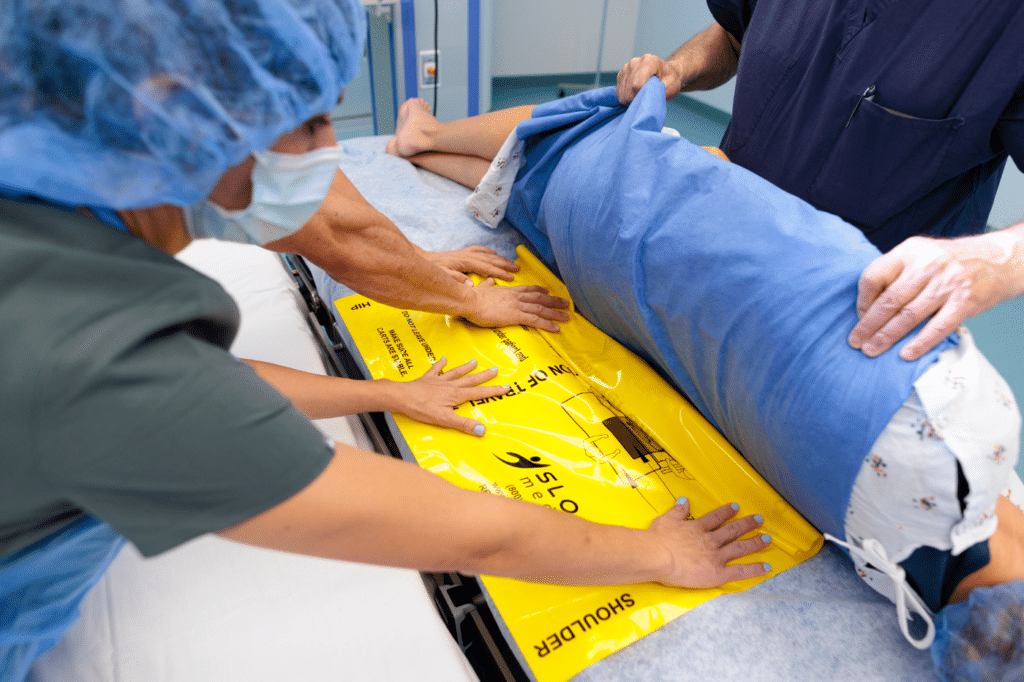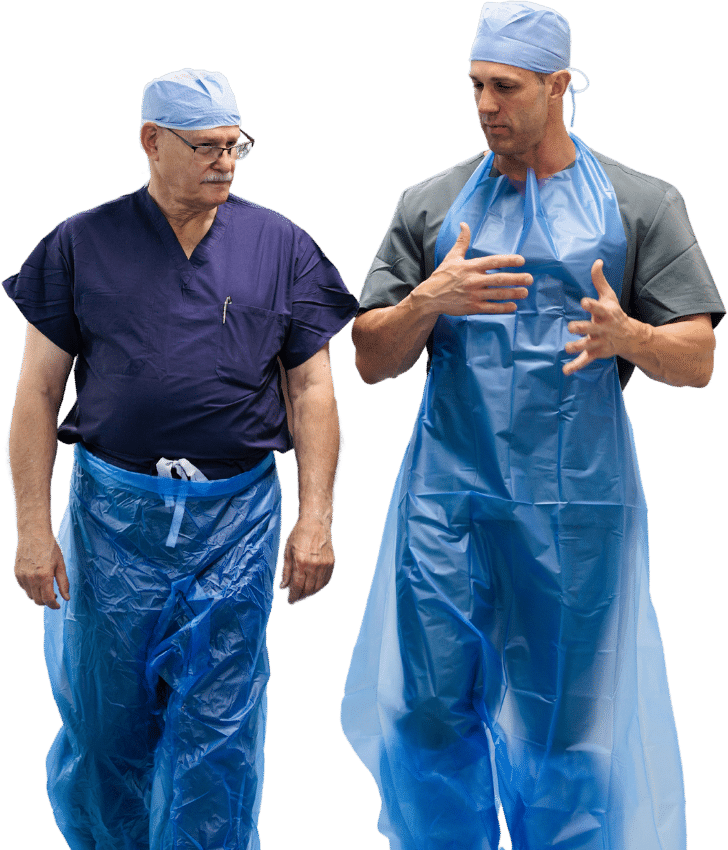It’s no secret that surgeons and operating room nurses got into the healthcare field in order to heal others.
That said, everyone in this industry knows that accidents happen and no day is risk averse to getting hurt yourself. In fact, workers in hospitals encounter more risks than most other environments.
According to the United States Department of Labor, over 50 percent of injuries and illnesses reported in 2020 among nursing assistants were musculoskeletal disorders.
What Kind of Injuries are Common for Healthcare Workers?
- Sprains and strains
- Slipped discs and other back injuries
- Slips, trips, and falls
- Punctures and cuts
- Broken bones
- Head trauma
Why are Healthcare Workers at Risk More than Others?
- Healthcare workers, like registered nurses, may be near potentially contagious patients and sharp devices contaminated with bloodborne pathogens.
- Hospitals serve patients with physical or mental health challenges, some of which increase the likelihood of violent outbursts.
- Healthcare work is physically demanding—with manual lifting—and can take a toll on the body as injuries take place from objects and/or people.
- Not to mention, when workers lift, reposition, and transfer patients who have limited mobility, ergonomic injuries may occur—particularly if the patient is larger.
But according to OSHA, the most common injuries resulting in days away from work are actually sprains and strains, listing the top six injury categories as:
- Bruises
- Soreness
- Fractures
- Multiple trauma
- Cuts and punctures
Sounds like a great day at the office, right?
And if you’ve ever been on the business end of patient transfers, you may find yourself nodding your head at some or all of these common categories.
Do You Consider Patient Transfer Boards PPE?
Sloan Medical has always cared about the safety of frontline workers—protecting them from the inside, out. It’s no secret we manufacture Personal Protective Equipment (PPE). But when thinking about PPE, you might not think of the patient transfer component being an area where you can protect yourself from a potential high-risk injury. Let’s explore that some more.
Picture this: the team is gathered around the bed and you’re preparing to move a patient from one surface to another. It’s a hectic time—the patient is immobile and large, and you’ve got to be prepared for anything—even if that’s a sudden sharp pain in your neck or back after you complete the lift.
OSHA studies show that the types of injuries that result in days away from work are caused by overexertion from motions such as:
- Lifting
- Bending
- Reaching
- Slipping without falling
Enter our ezGLIDE® Disposable Patient Transfer Sheet product, which promotes the safe lifting, repositioning, and transferring of patients—of all sizes and mobility levels.
- ezGLIDE is designed to reduce back strain, so you can worry less that a transfer is going to result in an injury—like a slipped disc—that would put you out of work.
- ezGLIDE is sterile and disposable, so you don’t have to worry if you’ve cleaned a transfer board good enough to prevent hazardous airborne pathogens.
- ezGLIDE is meant to stop the spread of infectious diseases, so you can do your job with the level of safety and security you deserve.
While ezGLIDE is safe for you, it’s also a better choice for your patients.
When your patients know they’re being lifted with our easier-to-use transfer sheet, they can remain calm and feel comfortable that the barely-there design isn’t making them uncomfortable—nor is it spreading any possible hazardous germs, or diseases after it’s properly disposed of. Thanks, PPE!
See ezGLIDE® in Action
Disposable and designed to reduce strain on backs, watch here how to safely and easily transfer patients between surfaces using ezGLIDE.
Patient Transfer Tips and Steps for Safely Using ezGLIDE:
- Rotate the patient using the log-roll technique.
- Position ezGLIDE so one open end is near the patient’s shoulders, and the other by the patient’s hips.
- Position the ezGLIDE halfway under the patient.
- Ensure the origin and destination surfaces are close by and all wheels on both surfaces are locked.
- Roll up the draw sheet for leverage.
- Begin the transfer while other helpers support the patient’s head and help push.
The ezGLIDE transfer sheet can safely remain with the patient for as long as needed or until all transfers are complete. When done, simply remove the sheet by pulling on it at the edge and dispose.
No Two Lifts Are the Same
So the next time you are transferring a patient, think about making it simpler and safer for you and your team. Take a look at our ezGLIDE® Disposable Patient Transfer Sheet comparison guide to see for yourself, AND request a free sample so you or your staff can try it for yourself.





